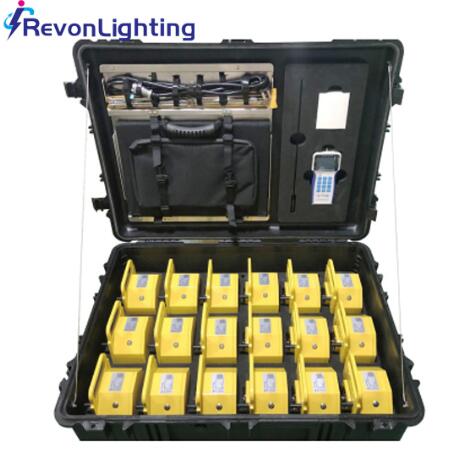Portable Runway Lighting: Revolutionizing Airfield Flexibility and Safety
In the evolving landscape of aviation, adaptability and efficiency are paramount. One solution gaining significant traction in both military and civilian aviation sectors is portable runway lighting. As the name suggests, this system provides temporary, transportable lighting to ensure safe aircraft operations where permanent lighting infrastructure is unavailable, damaged, or impractical. Its applications extend far beyond emergency use, offering valuable support in tactical operations, remote airfields, disaster response, and infrastructure upgrades.
What is Portable Runway Lighting?
Portable runway lighting refers to mobile lighting units specifically designed for airfield runways, taxiways, and apron areas. These units typically operate independently from fixed power sources, utilizing battery, solar, or generator-powered systems. The lighting fixtures are engineered to meet aviation standards, ensuring compliance with visibility, color, and intensity requirements for both daytime and nighttime operations.

Unlike traditional lighting systems, portable runway lighting can be deployed rapidly, transported easily, and configured flexibly. This makes it especially useful for temporary airstrips, heliports, and remote landing zones where traditional infrastructure is either absent or under maintenance.
Key Features and Advantages
1. Rapid Deployment
One of the most compelling benefits of portable runway lighting is its ability to be deployed in a short timeframe. Pre-configured systems can be installed by a small team without the need for extensive technical expertise or heavy machinery. This makes it an indispensable asset in emergency and military scenarios.
| portable runway lighting |
2. Versatility
These lighting systems can be used across a variety of terrains and conditions. Whether on unpaved runways in remote jungles or on temporary strips in arctic conditions, portable runway lighting ensures consistent performance. It is equally valuable for both fixed-wing aircraft and helicopters.
3. Autonomous Operation
Many modern systems come equipped with solar panels, energy storage, and remote control capabilities. This allows for autonomous operation with minimal human intervention. With the ability to function off-grid, these lights support missions in isolated locations without relying on external power sources.
4. Compliance with Aviation Standards
Despite being mobile, portable runway lighting is built to meet International Civil Aviation Organization (ICAO) and Federal Aviation Administration (FAA) guidelines. This ensures that temporary lighting offers the same level of safety and reliability as permanent installations.
| portable runway lighting |
5. Enhanced Safety
In low-visibility or nighttime operations, reliable lighting is essential for safe takeoffs and landings. Portable runway lighting significantly reduces risks, enabling safe aircraft movements even under challenging conditions.
Applications in Various Sectors
Military Operations
In defense, time-sensitive operations often require establishing airstrips in undeveloped or hostile regions. Portable runway lighting allows military forces to operate in such environments efficiently. Its silent, low-heat profile also supports covert operations.
Disaster Response and Humanitarian Aid
After natural disasters such as earthquakes, floods, or hurricanes, fixed infrastructure may be destroyed or inaccessible. Humanitarian teams can use portable lighting to establish air access quickly for relief supplies and evacuations.
General Aviation and Remote Airstrips
Smaller airports and private airfields, especially those in remote areas, often lack the resources to install permanent lighting. Portable runway lighting provides a practical solution for enabling nighttime operations and extending operational hours.
Airport Maintenance and Upgrades
During the renovation or expansion of airport runways and taxiways, sections may temporarily lose their fixed lighting. Portable systems ensure that flight operations can continue safely and without major disruption.
Technological Innovations
The development of LED technology has significantly enhanced the performance and energy efficiency of portable runway lighting systems. LEDs provide higher brightness, longer lifespan, and lower energy consumption compared to traditional bulbs. Combined with solar charging and smart battery management, these systems offer extended operational periods with minimal recharging.
Some systems now feature wireless control, allowing operators to turn lights on or off, adjust intensity, or change modes remotely. Integration with GPS and synchronization features also enhances alignment and system-wide coordination, further improving safety.
Environmental Considerations
With increasing emphasis on sustainability, portable runway lighting supports eco-conscious aviation practices. Solar-powered units reduce dependency on fossil fuels, and LED technology minimizes energy consumption. The minimal ground disturbance during setup also means less environmental impact compared to constructing fixed infrastructure.
Challenges and Considerations
While highly effective, portable runway lighting is not without limitations. It must be carefully maintained to ensure readiness, particularly in harsh environments. Battery life, component durability, and system calibration require regular monitoring. Additionally, while suitable for temporary or supplementary use, portable systems are not intended to replace permanent lighting in high-traffic airports.
Another consideration is the need for operator training. Though simple to use, correct placement and calibration are essential for ensuring optimal performance and safety.
The Future of Portable Runway Lighting
As aviation continues to expand into previously inaccessible regions and as the demand for emergency readiness grows, portable runway lighting will remain a critical tool. Future developments are expected to focus on improved energy storage, AI-based control systems, and integration with unmanned aerial systems (UAS) operations.
Innovations in modular design may also allow even quicker deployment, while enhanced durability will further increase the usefulness of these systems in extreme environments.
Portable runway lighting represents a vital advancement in aviation infrastructure. Its flexibility, speed of deployment, and alignment with safety standards make it an essential asset for military operations, emergency response, and remote aviation. As technology progresses, these systems will only become more efficient, intelligent, and environmentally friendly—ensuring that aircraft can land and take off safely, anytime and anywhere.
In a world where agility and preparedness are increasingly crucial, portable runway lighting stands as a beacon of innovation in airfield operations.
